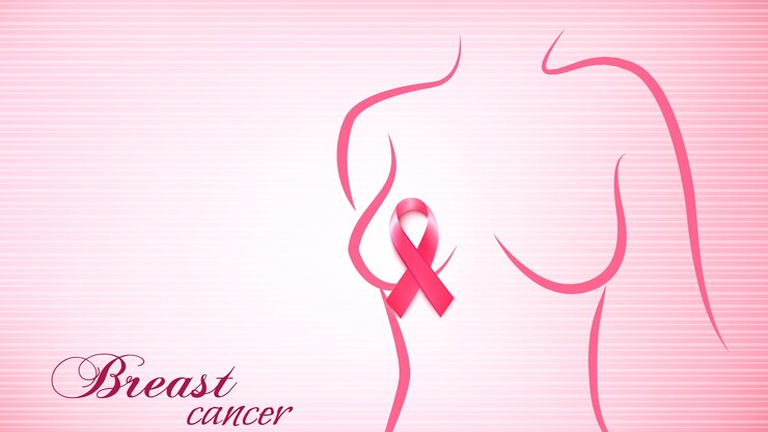Breast health is a crucial aspect of overall well-being for women of all ages. Understanding how to maintain healthy breasts, recognize warning signs, and differentiate between common conditions can help in early detection and prevention of serious diseases like breast cancer. In this comprehensive guide, we’ll explore breast cancer screening methods, common causes of breast pain, and the differences between fibrocystic breasts and breast cancer.
Breast Cancer Screening: Mammograms and Self-Exams
Early detection of breast cancer significantly improves treatment outcomes. Regular screening is the best way to identify abnormalities before symptoms appear.
1. Mammograms: The Gold Standard for Detection
A mammogram is an X-ray of the breast tissue used to detect tumors or cysts that may not be felt during a physical exam.
-
Who Should Get a Mammogram?
-
Women aged 40 and above should schedule annual or biennial mammograms.
-
Those with a family history of breast cancer may need earlier screening.
-
-
What to Expect During a Mammogram?
-
The breast is compressed between two plates for clear imaging.
-
The procedure takes about 20 minutes and may cause slight discomfort.
-
2. Breast Self-Exams (BSE): How to Check at Home
Performing a monthly self-exam helps women become familiar with their breast tissue and notice any changes.
-
Steps for a Proper Self-Exam:
-
Visual Inspection: Look for dimpling, redness, or changes in breast shape.
-
Manual Check: Use the pads of your fingers to feel for lumps in circular motions.
-
Check Both Breasts and Armpits: Lumps can sometimes form in the lymph nodes.
-
When to See a Doctor:
-
If you notice a new lump, nipple discharge, or skin changes, consult a healthcare provider immediately.
Breast Pain: Common Causes and Remedies
Breast pain (mastalgia) is a common concern among women and can range from mild discomfort to severe tenderness.
Possible Causes of Breast Pain:
-
Hormonal Changes: Fluctuations during menstruation, pregnancy, or menopause often cause cyclical pain.
-
Fibrocystic Breasts: Non-cancerous lumps that may become tender.
-
Infections (Mastitis): Common in breastfeeding women, causing swelling and redness.
-
Poor-Fitting Bras: Wearing unsupportive bras can lead to muscle strain.
-
Stress and Caffeine: High stress levels and excessive caffeine may worsen breast tenderness.
Effective Remedies for Breast Pain:
-
Wear a Supportive Bra: A well-fitted sports bra can reduce discomfort.
-
Apply Warm or Cold Compresses: Helps alleviate inflammation.
-
Reduce Caffeine and Salt Intake: Both can contribute to swelling.
-
Over-the-Counter Pain Relievers: Ibuprofen or acetaminophen can ease pain.
When to Seek Medical Help:
-
If pain is persistent, severe, or accompanied by a lump, consult a doctor.
Fibrocystic Breasts vs. Breast Cancer: Key Differences
Many women experience fibrocystic breast changes, which are benign (non-cancerous) but can sometimes mimic breast cancer symptoms.
Fibrocystic Breasts:
-
Symptoms:
-
Lumpy or rope-like texture.
-
Pain or tenderness, especially before menstruation.
-
Fluid-filled cysts that may change in size.
-
-
Diagnosis:
-
Clinical breast exam or ultrasound.
-
Often requires no treatment unless painful.
-
Breast Cancer Warning Signs:
-
Symptoms:
-
A hard, irregular-shaped lump that doesn’t move.
-
Nipple retraction or bloody discharge.
-
Skin dimpling (like an orange peel).
-
-
Diagnosis:
-
Mammogram followed by a biopsy if needed.
-
Key Takeaway:
While fibrocystic changes are common and harmless, any new or unusual lump should be evaluated by a doctor to rule out cancer.
Breast Health: Key Facts at a Glance
| Topic | Key Information | When to See a Doctor |
|---|---|---|
| Mammograms | – Recommended for women 40+ (annually/biennially). – Detects tumors early via X-ray imaging. |
If results show abnormalities or dense tissue. |
| Self-Exams (BSE) | – Perform monthly to check for lumps. – Look for skin changes, nipple discharge. |
New lump, asymmetry, or persistent changes. |
| Breast Pain Causes | – Hormonal shifts, fibrocystic changes, ill-fitting bras. – Rarely linked to cancer. |
Severe, non-cyclical pain or redness/swelling. |
| Fibrocystic Breasts | – Benign lumps; often tender before periods. – Feels lumpy or cystic. |
If lumps grow, harden, or cause extreme pain. |
| Breast Cancer Signs | – Hard, immovable lump. – Nipple changes, skin dimpling, unexplained redness. |
Immediate consultation for any warning signs. |
Quick Comparison: Fibrocystic vs. Cancerous Lumps
| Feature | Fibrocystic Breasts | Breast Cancer |
|---|---|---|
| Texture | Soft, fluid-filled cysts; may shift. | Hard, irregular, fixed in place. |
| Pain | Often tender (cyclical with periods). | Usually painless (but not always). |
| Nipple Changes | Rare. | Inversion, discharge (especially bloody). |
| Skin Appearance | No dimpling or redness. | Dimpling (“orange peel”), redness, scaling. |
Conclusion: Prioritizing Breast Health
Maintaining breast health involves regular screenings, self-awareness, and prompt medical attention for any concerning symptoms. By understanding the differences between normal breast changes and potential warning signs, women can take proactive steps toward early detection and prevention.
Action Steps:
✔ Schedule annual mammograms if you’re over 40.
✔ Perform monthly self-exams.
✔ Monitor and address breast pain with lifestyle adjustments.
✔ Consult a doctor for any persistent or unusual changes.
By staying informed and vigilant, you can protect your breast health and reduce risks associated with serious conditions like breast cancer.


